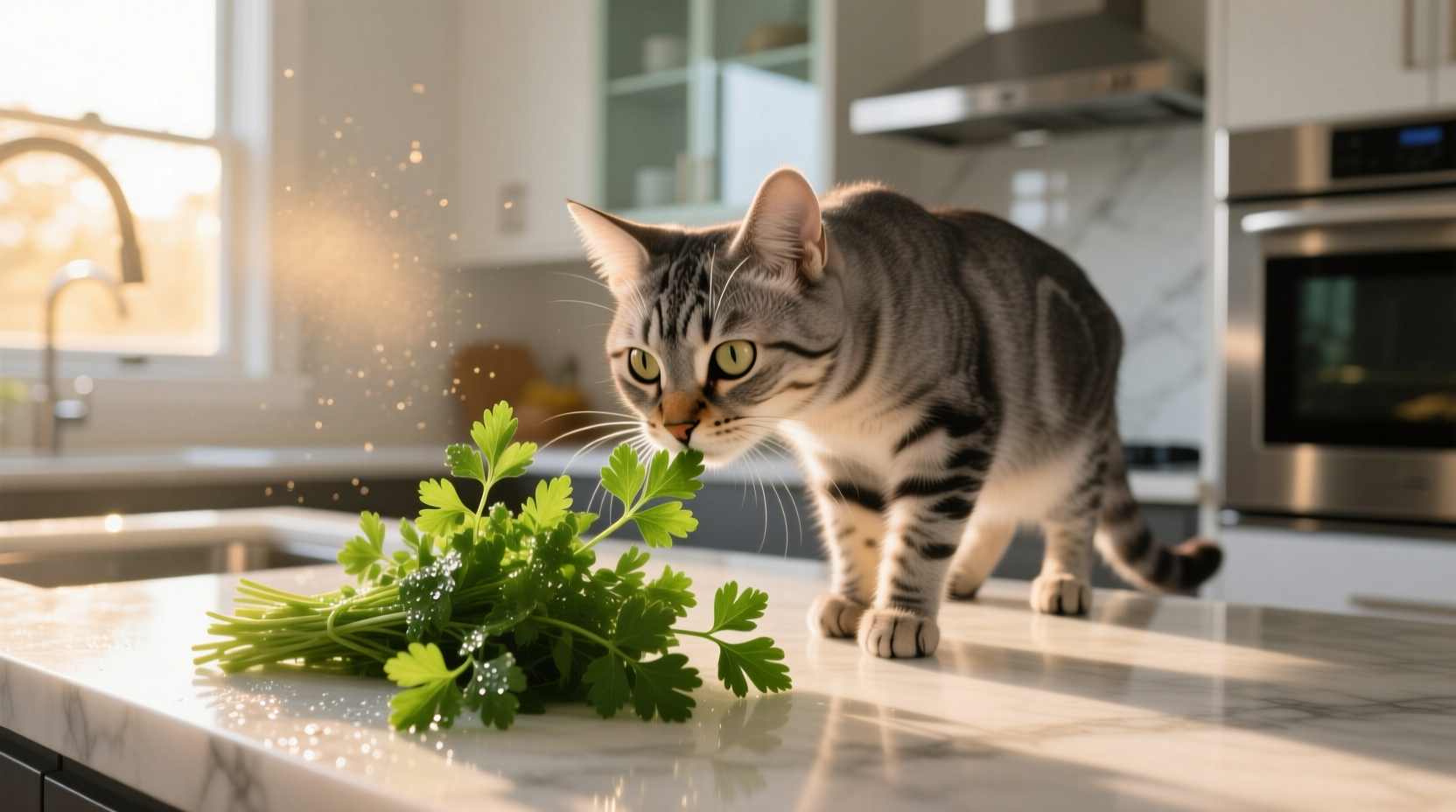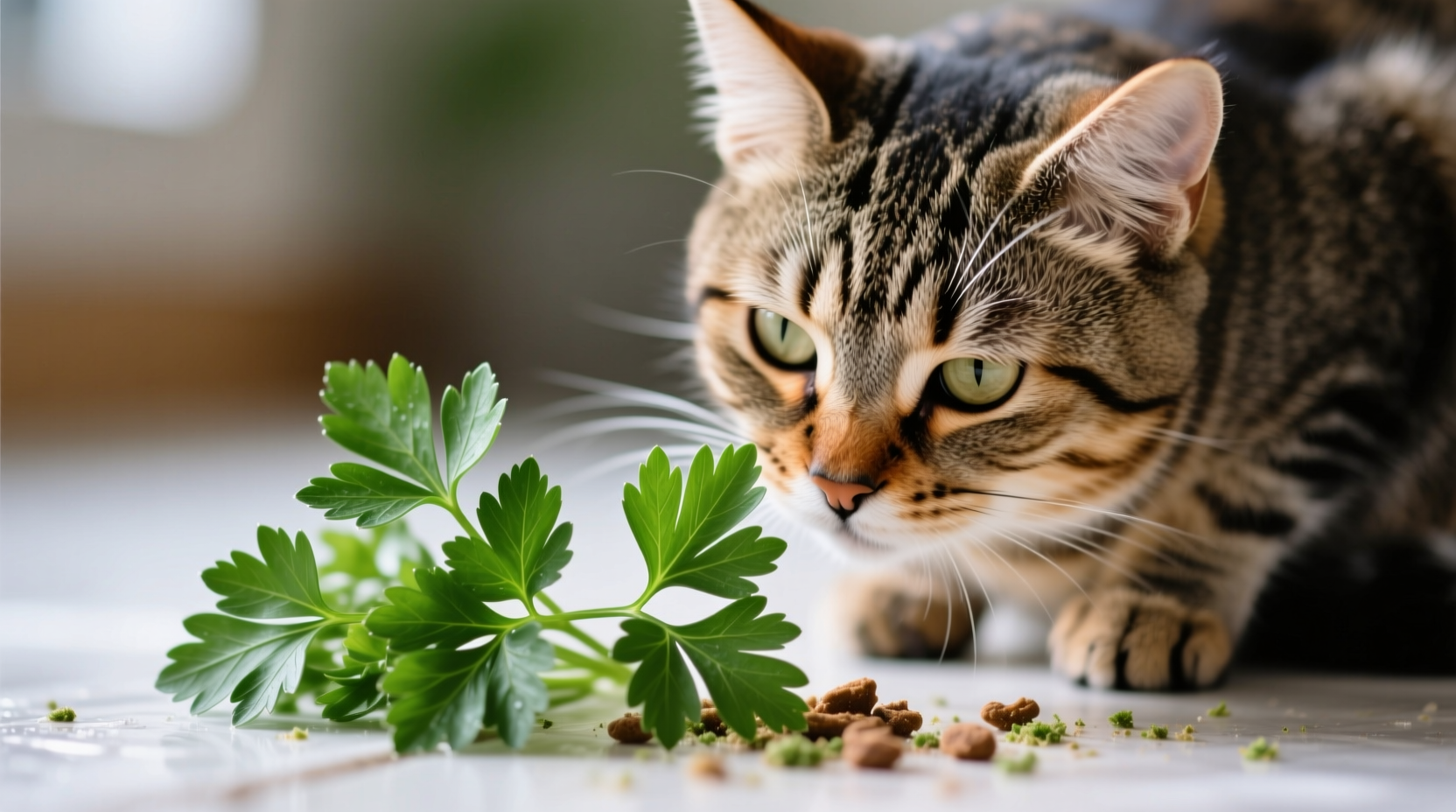As a cat owner, discovering your feline friend nibbling on your herb garden can trigger immediate concern. You need clear, trustworthy information about whether parsley poses a danger to your pet. Let's address this critical question with science-backed facts that prioritize your cat's wellbeing.
Immediate Action: Your Cat Ate Parsley - What Now?
If your cat has just consumed parsley, remain calm. Unlike many common household plants, parsley (Petroselinum crispum) isn't on the ASPCA's list of toxic plants for cats. Most cats experience no adverse effects from small amounts. Monitor for any unusual symptoms over the next 24 hours, particularly if your cat consumed large quantities.
Understanding Parsley's Safety Profile for Cats
While parsley appears on many "safe for cats" lists, the reality is more nuanced. The herb contains compounds that can affect cats differently based on quantity and individual sensitivity.
| Plant Component | Effect on Humans | Effect on Cats | Safety Threshold |
|---|---|---|---|
| Apiol | Digestive aid in small doses | Potential kidney irritation | Small amounts safe; large quantities problematic |
| Furanocoumarins | Generally harmless | Photosensitivity risk | Minimal concern with typical exposure |
| Vitamins A & C | Nutritional benefits | Excess can cause toxicity | Small amounts beneficial; large doses dangerous |
When Parsley Becomes Problematic: Context Boundaries
The safety of parsley for cats depends on several contextual factors that many pet owners overlook:
- Quantity consumed: A few leaves as an occasional treat poses minimal risk, while daily consumption of large amounts can lead to health issues
- Cat's health status: Cats with pre-existing kidney conditions face higher risks from apiol exposure
- Preparation method: Raw parsley carries different risks than cooked, and pesticide-treated plants introduce additional hazards
- Frequency of exposure: Occasional nibbling differs significantly from regular consumption
According to veterinary toxicology data from the Pet Poison Helpline, fewer than 5% of reported parsley-related cat incidents required medical intervention, and most involved substantial consumption of the plant over multiple days.
Surprising Benefits of Parsley for Cats (When Used Appropriately)
Contrary to common belief, parsley offers potential benefits when administered correctly:
- Natural breath freshener due to chlorophyll content
- Mild diuretic properties that may support urinary health
- Source of vitamins when given in controlled amounts
- Natural digestive aid in minute quantities
Many commercial cat foods and treats actually include parsley extract for these very reasons. The key is controlled, minimal exposure rather than free access to the plant.

Safe Usage Guidelines Every Cat Owner Should Follow
Based on recommendations from board-certified veterinary nutritionists, follow these evidence-based guidelines:
- Limited exposure: Offer no more than 1-2 small leaves once or twice weekly
- Wash thoroughly: Remove all pesticides and contaminants before offering
- Monitor reaction: Watch for vomiting, diarrhea, or unusual lethargy after first exposure
- Avoid essential oils: Never use parsley oil or concentrated extracts around cats
- Consult your vet: Especially if your cat has kidney issues or is on medication
When to Contact Your Veterinarian Immediately
While parsley isn't highly toxic, certain symptoms warrant professional attention:
- Excessive vomiting or diarrhea lasting more than 12 hours
- Signs of abdominal pain (hunched posture, vocalizing)
- Unusual lethargy or weakness
- Blood in urine or stool
- Loss of appetite for more than 24 hours
Remember that individual cats may react differently to herbs. What's safe for one cat might cause issues for another due to genetic variations in metabolism.
Safe Alternatives to Parsley for Cat-Friendly Gardens
If you want to provide safe greenery for your cat, consider these vet-approved alternatives:
- Catnip (Nepeta cataria) - the classic feline favorite
- Cat grass (wheatgrass or oat grass) - excellent for digestion
- Valerian root - natural calming effect for many cats
- Thyme - safe in small amounts with potential respiratory benefits
Always introduce new plants gradually and monitor your cat's reaction. The American Association of Feline Practitioners recommends keeping a journal of your cat's plant interactions to identify any sensitivities.











 浙公网安备
33010002000092号
浙公网安备
33010002000092号 浙B2-20120091-4
浙B2-20120091-4